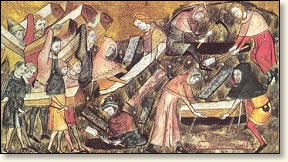Since I am writing on human disease, we have to deal a lot with microbes as infectious diseases are caused by microorganisms. So I am giving a small introduction about microbiology for clear understanding of common people.
Biology is the branch of science that deals with living organisms and microbiology is a part of biology. Microbiology deals with the microscopic organisms. They include bacteria, yeasts, molds, algae & protozoa. By microscopic it means that the organism can only be seen with the aid of microscope. If an object has a diameter of less than 0.1 mm, human eye cannot perceive it. In fact anything less than 1 mm cannot be properly perceived by our eye. So organisms, whose diameter falls below 1 mm, can be regarded roughly as microorganisms & fall under the domain of microbiology. For long these organisms were not known to human being for this reason. After the invention of microscope at early seventeenth century, this new world of biology has evolved and by far this is biggest community of life. In fact all the other groups of organisms (i.e. the macro world) together do not have the number or diversity and abundance as possessed by microorganisms.
Microscopes in the early stages were of two kinds - the first was simple microscope with a single lens of very short focal length consequently capable of high magnification (just like magnifying glasses of modern world). The second one was known as compound microscope with double lens system & hence completely displaced the simple one in modern world. But in early stages the compound microscopes were full of various optical defects render them less effective than simple microscope with very short focal length (although it is extremely difficult to produce a simple microscope with that short focal length). It takes a lot of skill to make such simple microscopes.
Now everybody may think that it is not possible to see bacteria or other microbes through naked eye. It is not possible to see a bacterium off course, but you can definitely visualize them when they are in clusters. The distinction of microbes as plants or animals are not very strong. Many of them specially the bacteria are closely resemble plants in many ways. So they can be seen as unicellular plants, but many of them has no similarity with plants or may have similarity with animals. Most of them are prokaryotes (has primitive cell) but many are eukaryotes (cells with prominent nucleus) as well. Microorganisms usually possess only one cell i.e. they are unicellular organisms. For their small size they have a very high ratio of surface area to volume, which is approximately 200,000 times greater than a similar ratio for an adult human being. They absorb nutrients through their body surfaces & have high metabolic rates & rapid rate of multiplication, which results in proliferation of a certain species in small time. This way they can affect an environment enormously in very short time. This particular aspect of microbes is very important in its interaction with higher organisms. This ability can be used very efficiently for detection of pollution in the environment or can be a detrimental factor while producing disease of mankind/other useful animals (but if the disease is against an organism harmful to human then it can be regarded as a beneficial issue also).
In modern classification of living kingdom bacteria has been placed separately. There are three groups —- Archea, Bacteria and Eukaryota. Archea & Bacteria are definitely microorganisms. But some of the eukaryotes are also microbes as they are unicellular. All the bacteria have prokaryotic cell, whereas the eukaryotes have eukaryotic cell. Archea have something common of both bacteria and eukaryota.















